Montana Belle

Brief Synopsis
Cast & Crew
Allan Dwan
Jane Russell
George Brent
Scott Brady
Forrest Tucker
Andy Devine
Film Details
Technical Specs

Synopsis
When their brother Bob shows up at their Oklahoma hideout with the fugitive Belle Starr, outlaws Emmett and Grat Dalton greet him with concern. Bob explains that he rescued Belle from arrest after her husband Sam was killed in a shootout and insists on protecting her. Meanwhile, in the nearby town of Guthrie, Tom Bradfield, the owner of the Bird Cage saloon, is visited by Matt Towner of the Bankers Protective Association, who asks for his help in apprehending the Dalton gang. For $100,000, Tom agrees that Towner and Marshal Ripple can use his successful saloon to trap the outlaws. Later, at the Daltons' hideout, Emmett receives a message to meet itinerant trader Pete Bivins at his campsite. There, Pete tells Emmett that the Bird Cage's safe is full of cash and, after negotiating a cut of the loot for himself, suggests that the gang rob it that Saturday night. Emmett and Grat plan the robbery, excluding Ringo, the Indian who owns the hideout, and Ringo's friend Mac from the scheme. Bob, meanwhile, confesses his love to Belle, and although she resists him, she agrees to leave with him after he returns from the holdup. During the Daltons' absence, Mac and the sharpshooting Belle take some target practice, and their gunshots are heard by a passing Cherokee. Investigating, the Indian spots Belle and alerts Marshal Ripple and his posse. Belle sees the posse approaching, and she, Mac and Ringo flee in a hail of bullets. Later, at blacksmith Jim Clark's place, the trio concludes that the Daltons double-crossed them and, in revenge, plot to foil their Bird Cage holdup. Wearing the same type of bandana favored by the Daltons, Mac, Ringo and Belle, dressed in men's clothing, walk into the Bird Cage shortly before the Daltons are to arrive and begin robbing the place. When the unsuspecting Daltons show up, Ripple and his men open fire on them, interrupting the holdup. All of the outlaws escape unharmed, and Belle later convinces Mac and Ringo to form a new gang with her. In the meantime, Pete, who has been skillfully playing both sides, informs the Daltons about Belle's trick, but Bob continues to defend her. After Belle's gang executes a series of robberies, the press declares that she and the Daltons are involved in a crime combine. Furious, Emmett orders the still-enamored Bob to find Belle and determine where she stands. At the same time, Belle, Mac and Ringo, now sporting fancy attire, return to Guthrie and boldly enter the Bird Cage. At first, Tom does not recognize Belle, who is wearing a blonde wig and claims she is Lucy Winters, a widow from Montana. While playing blackjack with her, however, Tom realizes she is one of the robbers but says nothing. Instead, Tom suggests that Belle use her sizable blackjack winnings to go into partnership with him. Belle accepts the offer and hires Ringo as a look-out and Mac as a dealer. Soon after, Bob spies Mac outside the saloon and, at gunpoint, accuses him of stealing Belle. When Mac insists that Tom is the thief, Bob enters the saloon and sees Belle. Pete, meanwhile, informs Tom about Bob, and when confronted, Bob draws his guns on his unarmed rival. Before Bob can fire, Belle shoots his guns off his holster, and Bob then is arrested. Later, Belle instructs Ringo and Mac to break Bob out of jail before he reveals her identity. Bob remains faithful to Belle, however, and after he is freed, he and Belle finally clear up their misunderstandings. While Bob, Mac and Ringo ride out to the Daltons' new hideout, Tom confers with Towner about another plan to trap the Daltons. Tom proposes that they plant a newspaper story announcing that a million-dollar payoff is to take place at the bank. Belle sees the story and schemes to steal the money with the Daltons. Soon after, Tom invites Belle, whom he has nicknamed "Montana," for a romantic ride in the country. Tom speaks eloquently about the future of the West, and Belle finds herself falling in love. Later, Belle confesses her identity to Tom, who informs her that he has long known about her impersonation. Tom then convinces Belle to go to Mexico, where he will soon join her and marry her. As she is fleeing in Pete's wagon, however, Mac and Ringo waylay her and take her to the Daltons, who insist that she ride with them to Guthrie. Unaware of Tom's trap, Belle agrees on condition that Tom not be hurt. In town, meanwhile, Tom shocks Towner by declaring that he is going to marry Belle Starr. Just then, the Daltons, Mac, Ringo and Belle ride into town and, while Ripple's men lie in wait, rob the bank. Shots soon are fired, and during the ensuing gun battle, Belle is wounded. Tom manages to get her out of town, but after the remaining outlaws have been either captured or killed, Ripple sends his posse to find Belle. Unable to ride because of her injury, Belle prepares to give herself up, but promises Tom that she will marry him after she has served her time.

Director
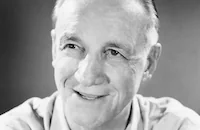
Allan Dwan
Cast

Jane Russell
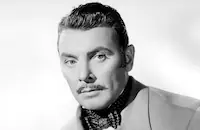
George Brent
Scott Brady

Forrest Tucker
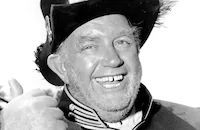
Andy Devine
Jack Lambert

John Litel

Ray Teal
Rory Mallinson
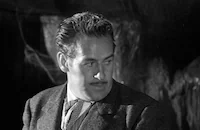
Roy Barcroft
Holly Bane
Ned Davenport
Dick Elliott
Eugene Roth
Stanley Andrews

Gregg Barton

Glenn Strange
George Chesebro
Pierce Lyden
Wade Crosby

Kenneth Macdonald
Rodney Bell
Iron Eyes Cody
Charles Soldani
Robert Neff
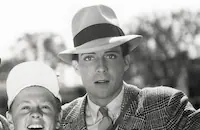
Dennis Moore
Rex Lease
Steve Clark
Crew
Frank Arrigo
Walter Colmes
Earl Crain Sr.
Norman S. Hall
Lee Lukather
Howard Lydecker
Theodore Lydecker
Jack Marta
Margaret Martinez
John Mccarthy Jr.
Horace Mccoy
George Milo
Portia Nelson
Adele Palmer
Robert Peters
Arthur Roberts
Nathan Scott
James Thornton
M. Coates Webster
Howard Welsch
Howard Welsch
Howard Wilson
Stanley Wilson

Film Details
Technical Specs

Articles
Montana Belle
Hughes had discovered the sometime model and full-time doctor's receptionist when he was planning The Outlaw (1943), a sex-charged Western about Billy the Kid (Jack Buetel) and a fiery half-breed (Russell). While censorship problems, largely stemming from the photography of Russell's impressive figure, kept the film off screens for years, he kept Russell under contract to do basically nothing. In 1946, he started loaning her to other studios to keep her busy and keep publicity flowing for the still mostly unreleased The Outlaw.
After completing work on Bob Hope's comic Western The Paleface (1948), which would generate the first decent reviews of her career, Russell took a trip to Republic Studios for Montana Belle. Although Republic was primarily known for making B movies with second-string talent, Russell was lucky to work with director Allan Dwan, a major talent who spent most of the talkie era doing low-budget films, and George Brent, a major star in his days at Warner Bros. who had gone independent after World War II. It also featured up-and-coming action star Scott Brady, whom Russell would hire years later when she produced and starred in Gentlemen Marry Brunettes (1955).
Dwan had started his career working with D.W. Griffith in the earliest days of filmmaking. He had been one of the first directors making the trek West to Hollywood and had been instrumental in making stars of Douglas Fairbanks and Gloria Swanson. Although he wouldn't go quite that far with Russell, at least he found the perfect way to make the relative newcomer comfortable on screen -- he let her sing. As part of the film's plot, Russell goes into hiding after a series of daring robberies (dressed as a man, a daunting task for any costumer) and becomes Brent's partner in a dance hall. The actress suggested the musical scenes as a logical extension of that plot development, and Dwan agreed. He even allowed her to sing "The Gilded Lily," a song by Russell's friend Portia Nelson, along with the 1892 standard "My Sweetheart's the Man in the Moon." Russell had always been musical, singing and playing piano as a child. Not only were her musical scenes her most effective in Montana Belle, but when word spread that she could sing, she started getting radio work and even a recording contract. Many of her later films would include musical numbers for her, and she would score her biggest on-screen hit as half of a nightclub act with Marilyn Monroe in Gentlemen Prefer Blondes (1953). Years after making her last film, she would even hit Broadway as Elaine Stritch's replacement in the musical Company.
Unfortunately, the rest of Montana Belle failed to measure up to its musical interludes. When Hughes got a look at the film, he paid $600,000 to buy it from Republic. His plan was to hold up release until he had made Russell a big enough star that the picture couldn't damage her career, a move he also undertook with It's Only Money (aka Double Dynamite [1951]), a comedy with Frank Sinatra and Groucho Marx she made at RKO shortly after Hughes bought the studio in 1948. That film would get out a year sooner than Montana Belle, which didn't see the light until 1952. By that time, Russell had scored in two films with Robert Mitchum, His Kind of Woman (1951) and Macao (1952), and re-teamed with Hope for Son of Paleface (1952), films that gave her a much stronger box-office standing than she had enjoyed in 1948. The reviews were still weak -- the film hadn't turned into a winner just sitting on the shelf -- but at least they acknowledged her current status while dismissing the early film. Variety's notice was typical: "It's safe to say that her more recent efforts are much better."
Montana Belle has fared marginally better in recent years thanks to a renewed interest in Dwan's career. It has been re-examined in a more favorable light along with his other Republic films such as Sands of Iwo Jima (1949) and Belle le Grand (1951). Even acknowledging the film's weaknesses, The Encyclopedia of Western Movies cited Russell's as the best big-screen interpretation of the legendary Belle Starr.
Producer: Howard Welsch
Director: Allan Dwan
Screenplay: Horace McCoy, Norman S. Hall
Based on a story by Howard Welsch & M. Coates Webster
Cinematography: Jack Marta
Art Direction: Frank Arrigo Music: Nathan Scott
Cast: Jane Russell (Belle Starr), George Brent (Tom Bradfield), Scott Brady (Bob Dalton), Forrest Tucker (Mac), Andy Devine (Pete Bivins), John Litel (Matt Towner), Ray Teal (Emmett Dalton), Roy Barcroft (Jim Clark), Glenn Strange (Deputy), Iron Eyes Cody (Cherokee).
C-82m. Closed captioning.
by Frank Miller

Montana Belle
Quotes
Some deputy you are, sitting there reading the newspaper. You're under arrest!- Marshal Ripple
Let's walk out of this town.- Mac
Trivia
Production was completed in 1948, but film was not released until four years later.
Notes
Although onscreen credits and reviews indicate that the picture was shot in color, the viewed print was in black and white. As noted by contemporary news items, Montana Belle was produced in 1948 by Fidelity Pictures, a company run by Howard Welsch. In July 1948, Los Angeles Times announced that Fidelity had entered into a deal to make the story, which at the time was credited exclusively to M. Coates Webster, for release by Republic Pictures. Brian Donlevy and Ann Sheridan were mentioned as possible stars. Fidelity borrowed Jane Russell from RKO for the production.
News items and Hollywood Reporter production charts indicate that Walter Colmes began as the film's associate producer, but was replaced by Robert Peters halfway through principal photography. According to a New York Times news item, in April 1949, Welsch and Peters sold the picture, whose budget was estimated at $650,000, to RKO for $875,000. RKO head Howard Hughes then shelved the film for three and a half years. For more information about Belle Starr and other films inspired by her life, see entry for the 1941 Twentieth Century-Fox picture Belle Starr in AFI Catalog of Feature Films, 1941-50. For more information about the Dalton Brothers, see entry for the 1945 Universal film The Daltons Ride Again in AFI Catalog of Feature Films, 1941-50.















